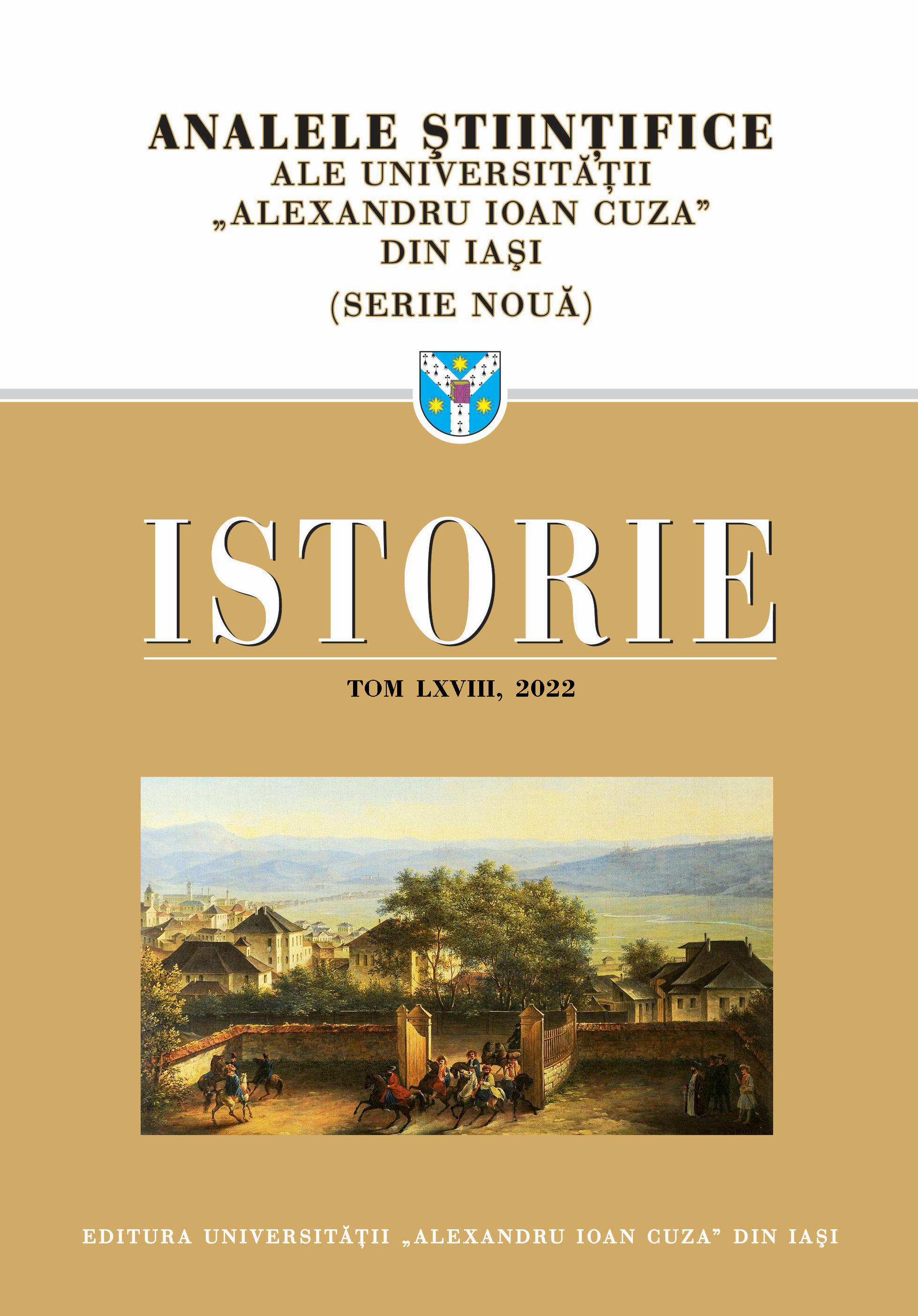Planul satului Lăzăreni (Iaşi) şi surprizele sale: reşedinţa contelui Rumeanţev şi schitul de la Stânca Jijiei
The plan of the village of Lăzăreni (Iaşi) and its surprises: the residence of count Rumyantsev and the hermitage at Stânca Jijiei
Author(s): Laurențiu Rădvan, Mihail Anatolii CiobanuSubject(s): History, Historical Geography, Maps / Cartography, Local History / Microhistory, 18th Century, 19th Century
Published by: Editura Universităţii »Alexandru Ioan Cuza« din Iaşi
Keywords: Moldavia; Lăzăreni; Rumyantsev; Ruset family; map; topography;
Summary/Abstract: In the Military-Historical Archive from Moscow (RGVIA) there are numerous plans of regions from Romanian area, fortresses, cities, military routes, points of interest for the Russian army and administration interested in expanding their control or influence in South-Eastern Europe. Among the maps, there are also some of villages, most of them erected for reasons similar to those mentioned above. However, one plan caught our attention because it doesn't seem to have any military significance. It is the plan of the village of Lăzăreni and the surrounding region, drawn in 1791 by surveyors led by second major I. Kupcinov. The central point of interest of the plan is the residence of the great boyar Vasile Ruset (Rosetti), with the nearby church, garden, stables, mills, vineyards. Above the mansion was the village of Lăzăreni, and further north, in the forest, there is a hermitage, which we identified it as the mysterious Stânca hermitage on Jijia. The plan captures very well the topography and hydrography of the area, which have changed very little until today. The analysis of the written sources revealed the reasons for the making of this plan. At the Ruset boyar’s mansion, was present for more than two years marshal Petr Alexandrovich Rumyantsev (Zadunaischi), who had already distinguished himself through a long military career, started with the war with Sweden in 1741-1743, continued in the Seven Years’ War and culminated in the war Russian-Turkish from 1768-1774. He was sent to Moldavia in 1788, but age and illness, along with disagreements with Potemkin, led him to retire in the spring-summer of 1789 to the mansion of Lăzăreni, where he stayed until after the signing of the peace of Iasi (Jassy), from January 1792. Several letters sent from Lăzăreni by count Rumyantsev to Catherine II have been preserved. The residence here was visited and described in 1794 by Johann Christian von Struve and Heinrich von Reimers. The Lăzăreni estate and the mansion remained in the possession of the Ruset family, later passing to the Sturza family. It was destroyed in World War II, with only a few cellars, the church and a ruined vault nearby surviving.
Journal: Analele Ştiinţifice ale Universităţii »Alexandru Ioan Cuza« din Iaşi. Istorie
- Issue Year: 2022
- Issue No: 68
- Page Range: 303-319
- Page Count: 17
- Language: Romanian

